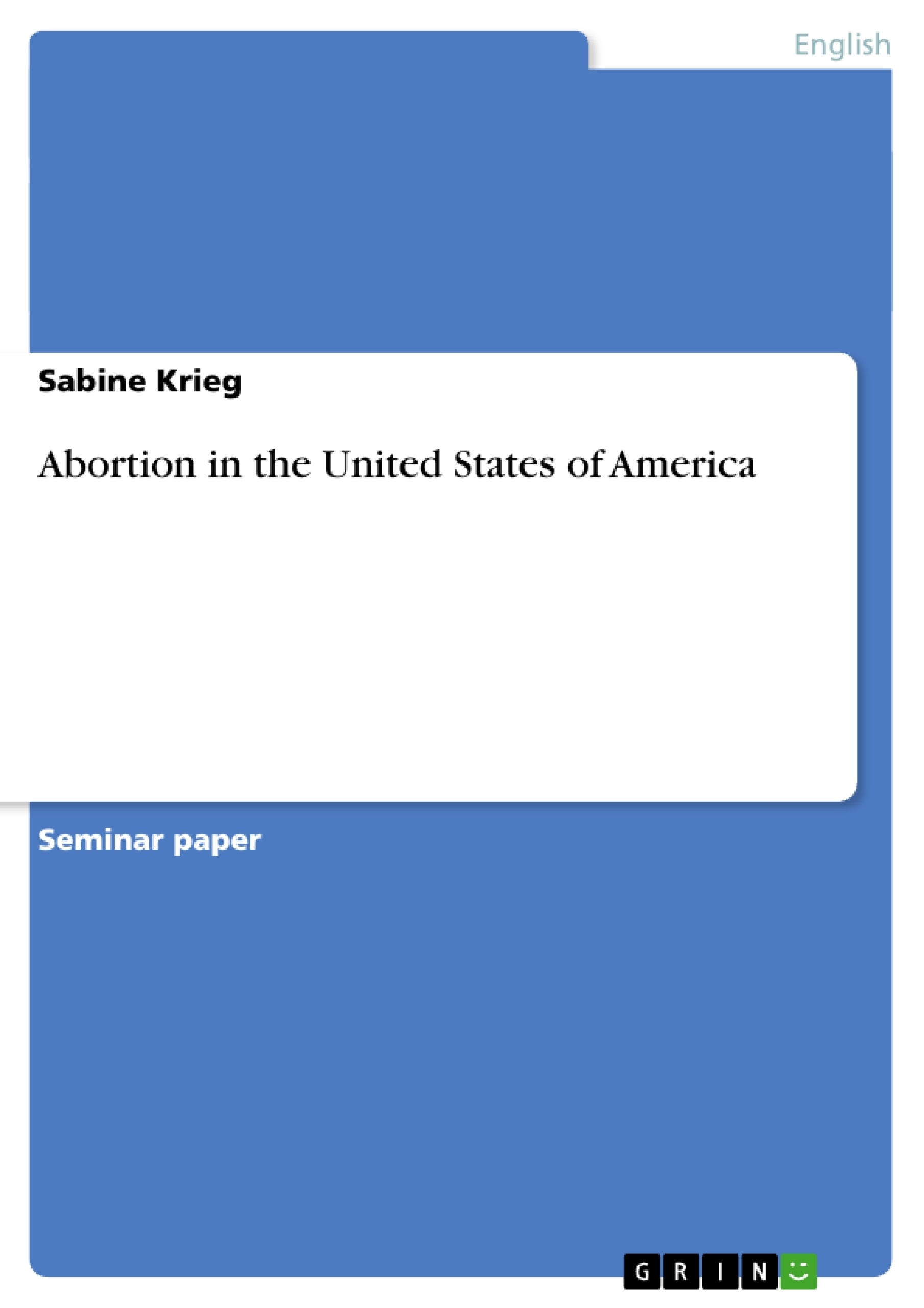In America, abortion is a topic that is especially discussed by the differentiating pro-life and pro-choice groups. They talk about whether women should be allowed to have an abortion or not, and almost every American has an opinion on the issue. One might ask if this is necessary considering the fact that laws do not prohibit abortion. But in the US, the overall question of morality, conservatism, but also individualism and equality plays an important role and is the basis for these discussions.
Therefore, it is important to have a look at the history of abortion to understand the controversial opinions and the importance of the topic for the public. Furthermore, one has to understand the procedure of abortion and think about why women decide not to have a child. The fact that pro-life- and pro-choice-groups are trying to convince others of their attitude towards abortion plays an important role, as well as concerns about the future.
To ease the beginning of the reading and to make the reader familiar with the issue, the paper starts with a definition of abortion.
Inhaltsverzeichnis (Table of Contents)
- INTRODUCTION
- ABORTION – A DEFINITION
- THE HISTORY OF ABORTION
- ABORTION AT THE VERY BEGINNING
- EARLY ANTI-ABORTIONISTS
- CHANGE IN SOCIETY
- ABORTION IN THE USA
- WHO IS HAVING ABORTIONS AND WHY?
- THE PROCEDURES
- THE MORNING AFTER PILL
- THE ABORTION PILL MIFEPRISTONE OR RU-486
- DILATION AND EVACUATION
- POST ABORTION SYNDROMES (PAS)
- PRO-LIFE- AND PRO-CHOICE-MOVEMENTS
- PRO-LIFE-GROUPS
- PRO-CHOICE-GROUPS
Zielsetzung und Themenschwerpunkte (Objectives and Key Themes)
This paper aims to examine the historical development and contemporary situation of abortion in the United States, particularly focusing on the public debate surrounding the issue. The text explores the historical context, legal developments, and the evolving attitudes towards abortion, ultimately aiming to shed light on the complexity and significance of the ongoing discussion.
- Historical evolution of abortion practices and regulations
- The emergence of pro-life and pro-choice movements
- The impact of Roe v. Wade and its implications for abortion rights
- The diverse motivations behind women's decisions to seek abortions
- The medical procedures used in abortion and their evolving safety
Zusammenfassung der Kapitel (Chapter Summaries)
The paper begins by defining abortion and its historical development in the United States, highlighting the transition from a period of limited medical knowledge and widespread tolerance of abortion to the emergence of early anti-abortion movements. The influence of the Catholic Church and the American Medical Association (AMA) on restricting abortion practices is explored, leading to the legal prohibition and clandestine nature of abortions in the 19th and early 20th centuries. The text then examines the changing societal landscape of the 1950s and 1960s, emphasizing the role of improved medical technology, concerns about overpopulation, and the growing emphasis on individual rights in shaping public attitudes towards abortion.
Schlüsselwörter (Keywords)
The text focuses on key terms and concepts such as abortion, pro-life, pro-choice, Roe v. Wade, women's rights, reproductive rights, medical procedures, and social movements. It explores the complex interplay between historical context, legal developments, and societal shifts in shaping the ongoing public debate surrounding abortion in the United States.
- Quote paper
- Sabine Krieg (Author), 1999, Abortion in the United States of America, Munich, GRIN Verlag, https://www.grin.com/document/19670



